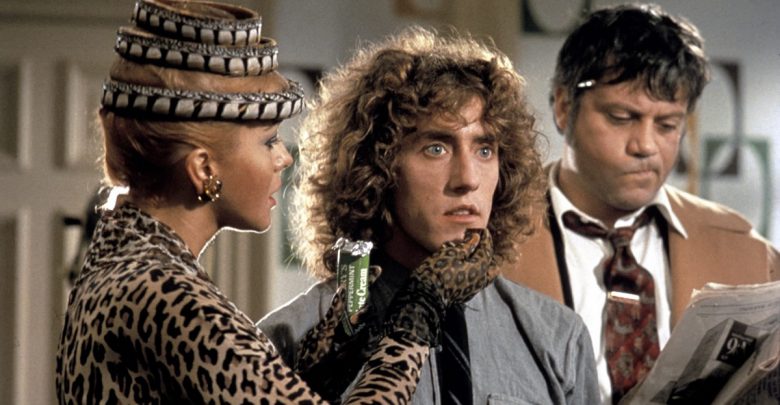Retro on Retro: Ken Russell’s “Tommy”
The legendary rock opera stumbles slightly in its transition to the screen
 IMDb
IMDbMost of us know The Who’s “Pinball Wizard,” a bop of a track that told the story of a deaf, dumb, blind kid who sure knew how to play a mean pinball.
But did you know that this legend of a track was part of their bigger rock opera project Tommy, released in 1969?
After achieving widespread critical success, a film adaptation of the project was released in 1975, following the same core plot conceits as the album from which it draws its music. The result? A movie that, while entertaining, is laden with flaws that come with the genre conventions of the rock opera.
Tommy is a young boy whose father leaves to fight for the Royal Air Force in World War II. After being presumed dead, Tommy’s mother, Nora, takes up a lover, Frank. Tommy’s father returns unannounced one night and is killed by Frank. Nora and Frank frantically tell Tommy to forget about the incident; this, combined with the trauma of seeing his father killed, is what causes Tommy to lose those three senses.
After various failed attempts to break Tommy’s mental block, Tommy is drawn, through inner messianic visions, to pinball, which he’s so damn good at that he becomes the literal world champion of pinball. His family exploits his newfound wealth and fame, living a life of luxury while attempting to find some way to cure Tommy.
Tommy is eventually cured, and armed with his visions, becomes a religious leader, drawing millions to his sermons. Wow.
The first half of this film is a damn trip, and a fun one at that. Early scenes, where Tommy is exposed to various social institutions and suffers abuse, use creative symbols and psychedelic imagery to entertaining effect. Nora takes an adult Tommy to a church that worships Marilyn Monroe and gives out whiskey and valium as communion. To symbolize his forced exposure to drugs and sex, Tommy is locked in a syringe-laden iron maiden-like contraption and taunted by a woman known as the Acid Queen, played by Tina Turner.
These scenes also employ powerful use of colour, with each one colour-coded to identify their places in constructing Tommy’s experience. The Acid Queen’s dress, as well as the liquid in her syringes, are scarlet red; Tommy’s physical abuse at the hands of his cousin takes place in yellow rooms, and his sexual abuse at the hands of Frank’s perverted friend are soaked in blue.
The best songs of the film are also in the first half. “Pinball Wizard,“ of course, will be the standout favourite, but “Eyesight to the Blind” and “Acid Queen” are amazing pieces of art rock themselves, blending amazingly with their respective scenes.
Once Tommy is freed from his mental block, however, the enjoyability of the film takes a quick nosedive. The film steps back from crazy aesthetic moves to critique the monetization of religion and the sloth and opulence of Nora and Frank, which while welcome in some respects, truly begins to ruin the pacing of the film by dragging out the worst of the soundtrack to some of the most boring scenes. Tommy preaching from a hang glider, shirtless, calling himself a sensation? Yes, and unfortunately, this is one of the least exciting parts of the film.
The ending, which I won’t spoil for you here, left me scratching my head, wondering what the hell the point of it all was. Usually, endings like this don’t faze me; films with open ending usually do enough development in creating and resolving narrative meaning in place of plot. Tommy, unfortunately, fails to resolve meaning and plot in a satisfying or effective way, leaving both half-baked and lacking.
This movie is a fun, overly produced, aesthetic romp through an inane plot set to art rock. A lot of its best qualities, and its worst flaws, come with the rock opera genre. Don’t expect much from this film, but expect some dazzling things to flash across the screen and for ridiculous plot points to make you giggle out loud.




